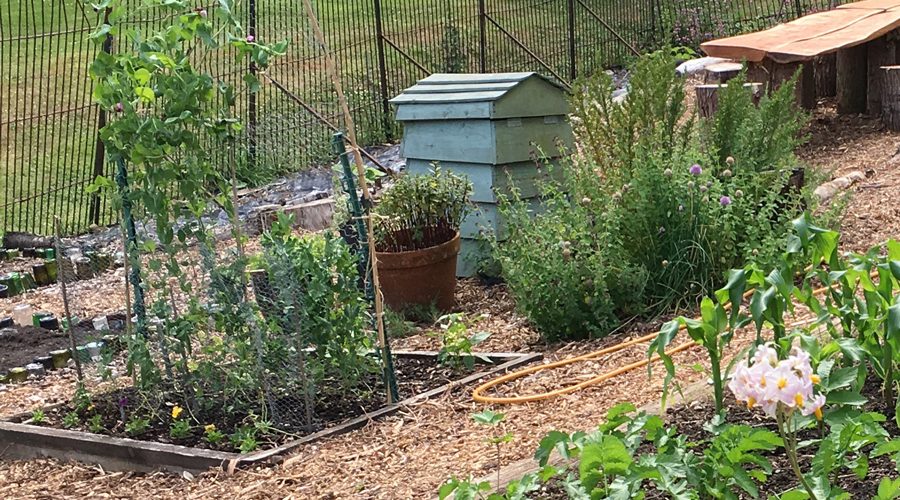As I have discovered over the past 5 or 6 years of growing veggies in my reasonably steep garden, there are several options to creating a plot on a slope. There’s not a right way or a wrong way, so don’t be afraid to just get stuck in this year and create your sloping veg plot whichever way you feel will work best for you.
- Run terraced beds across the slope
This is more or less what I have done. When I took the plot over, it was a simple slope (steeper than it looks in the picture). I decided to put in raised beds, trying to make sure that each raised bed was kind of terraced and mostly flat. The idea behind this was that if I actually flattened off a portion of the slope, or terraced it in any way, then the flat part would get waterlogged. As it is, the drainage is not too bad as it is. The beds run horizontally from east to west across the slope, and I tend to plant the veggies in rows going across the width of the beds, i.e from north to south.
Pros: no water logging, plants get good sun all day, it looks nice
Cons: I can’t remove the edges of the raised beds, and these provide great habitats for slugs. - Flatten the space
This definitely has its appeal in that it can be easier to then create beds and put in a greenhouse and so on. However, there are negatives in that it requires a fair bit of work, often including heavy machinery and this isn’t ideal for the health of the soil or for the little eco-system that is thriving within it. It can also become waterlogged, and if you have clay soil this can be a real pain to deal with. In my own garden, I’ve got a levelled out area right in the middle of the slope which means that it doesn’t become too waterlogged as it drains off the other side.
Pros: Being able to remove edges of raised beds, being able to plant more/face beds north to south as required
Cons: Waterlogging, plants actually get less exposure to the sun, would require a digger (or a lot of manual, backbreaking work!) - Run rows up and down the slope
This is actually quite a popular way of growing on a slope. The rainwater drains down the beds and it is easy to set up traditional beds without needing raised edges. What you will need to remember is that the top of the slope will be drier than the bottom, so will require more watering. The bottom of the slope will tend to have more moisture in the soil. You can plant veggies with this in mind – leafy greens and lettuces will do well at the bottom, for example.
Pros: Good growing conditions, good drainage, no bed edges
Cons: Won’t work well on a steep slope, compost mulch can easily run off in heavy rain. If not south facing, some parts of the slope will receive different levels of sunlight, so keep that in mind too.

